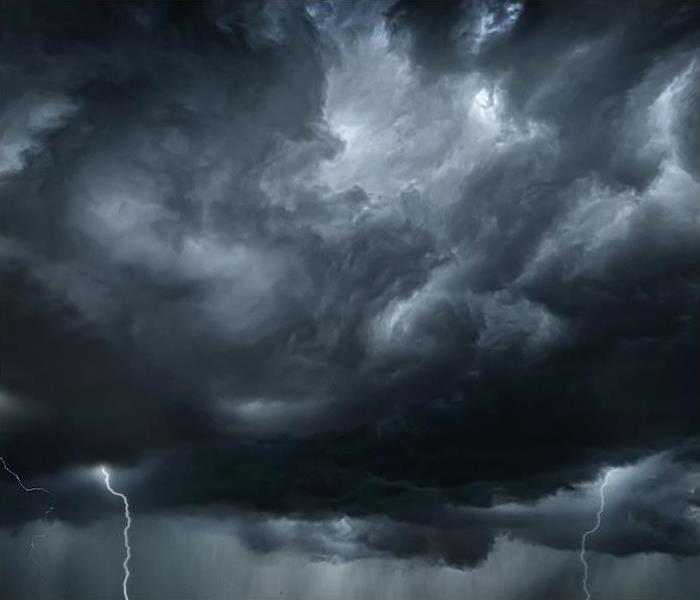Make Your Storm Safety Plan Today
6/12/2022 (Permalink)
 If you discover storm damage to your home or business, reach out to SERVPRO of NW & SE Dutchess right away.
If you discover storm damage to your home or business, reach out to SERVPRO of NW & SE Dutchess right away.
Weather can get scary quickly. Heavy rain, lightning, hail, and strong winds pose a threat to lives and structures. Thunderstorms are such a common occurrence that the United States can see close to 100,000 every year. These storms are not something any of us can avoid or ignore.
New York is known for a variety of weather throughout the year, including strong thunderstorms. We all can likely recall the path of destruction left behind throughout Dutchess County last year when what seemed like a normal summer storm turned for the worst, toppling trees and taking out the power. Our extreme weather should serve as a reminder that we need an emergency weather plan to stay safe and protect our families.
Your Severe Weather Communication Strategy
Communication should be the first step in your emergency plan, and that means you need to understand the difference between a watch and a warning. This is essential knowledge so you can move your family to safety at the appropriate times.
In order to stay vigilant during a storm, you should have at least two ways to receive alerts from weather officials. Your cell phone and a weather radio from the NOAA are two common devices you should have charged before a storm moves in.
Once you have these two pieces of your plan taken care of, you should create a communication strategy for your family. Create a designated space in your home as a safe area, typically a basement or a bathroom. Make sure everyone in your house knows that this is where to go when the weather turns dangerous. You may also want to create a plan for any family members that may not be home during the storm so that everyone is safely accounted for.
Your Severe Weather Emergency Kit
In your designated safe space, you should keep an emergency kit stocked with supplies to sustain your family. Flashlights, batteries, water, and nonperishable items should all be included in the kit, as well as first-aid supplies.
In the event that you should need to shelter in place, you may also want some comfort items such as blankets or games to keep your family calm. You should have enough supplies to last for up to 72 hours.
Your Severe Weather Aftermath Checklist
Once the storm is over, it is essential to know what to do next. Taking the proper steps means you can mitigate any losses and re-address any parts of your safety plan that may not have worked. As soon as you are able, you should walk your property and assess for any damages you may have received.
Pay close attention to your roof, windows, and doors to ensure their seals are intact. These areas are the most likely locations where water can intrude, and you will want to mitigate any moisture quickly.
If you do find your property damaged, make our trained professionals your first call. We are locally owned, and as your neighbors, SERVPRO of NW & SE Dutchess County wants to offer you peace of mind and get our community put back together faster. We are available to start your restorations 24⁄7.
Once you have assessed for damages and restoration is underway, talk with your family members and review the steps of your plan. What worked and what did not work? Did you have enough supplies in your kit? Was everyone able to check in as safe?
Your emergency plan should be adjusted and practiced continuously to ensure you are ready for the next storm.
If you discover storm damage to your home or business, you can count on SERVPRO to handle the restoration. We’re here 24⁄7 to spring into action—get in touch with us today.






 24/7 Emergency Service
24/7 Emergency Service